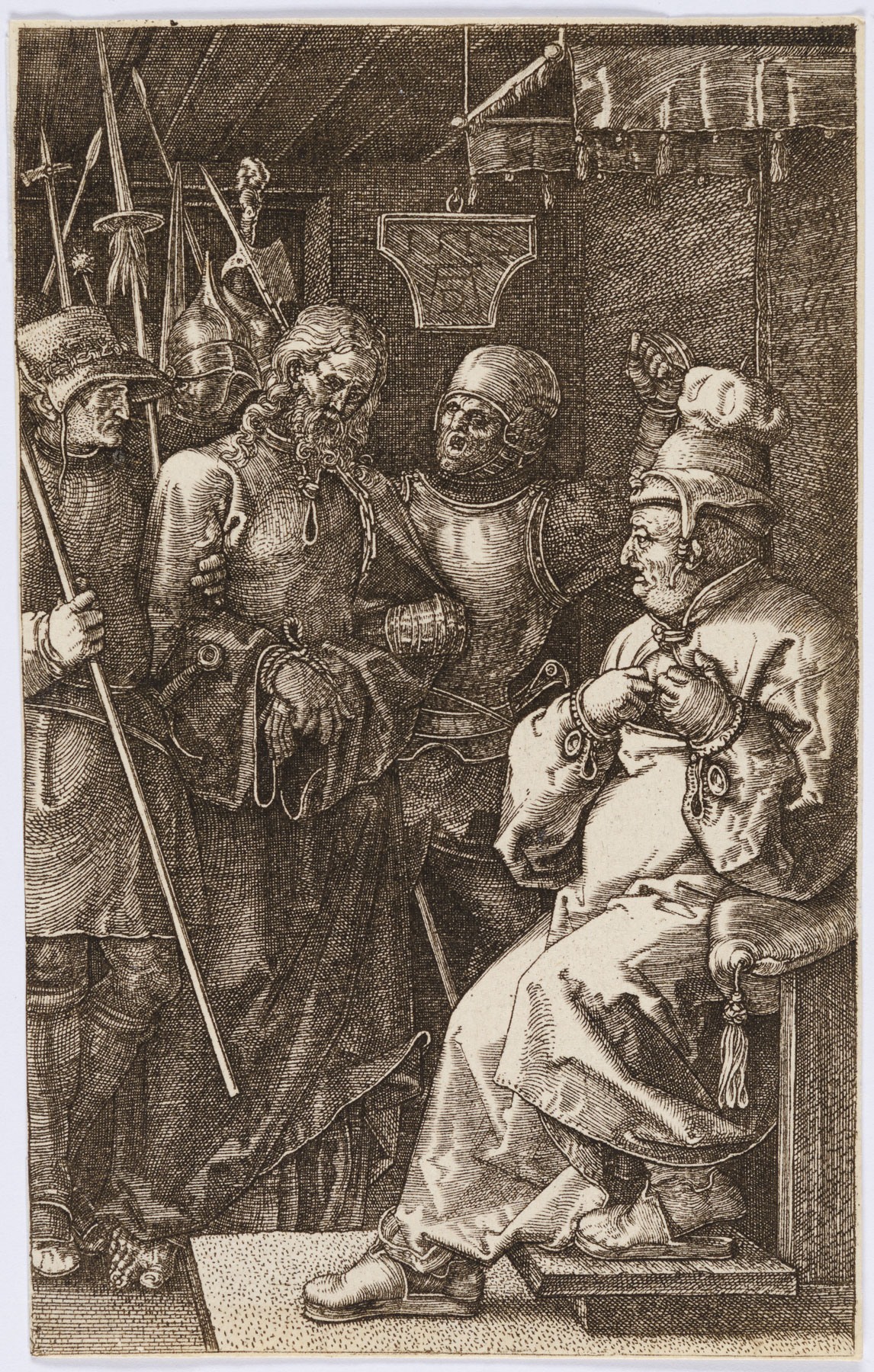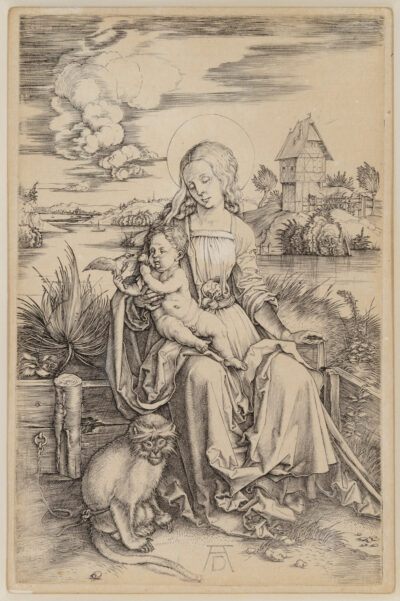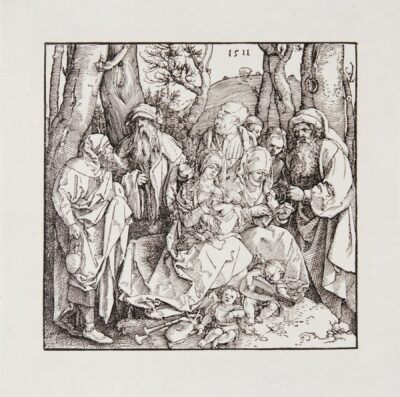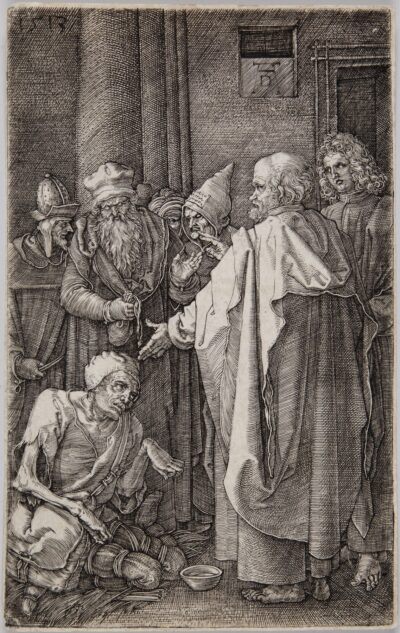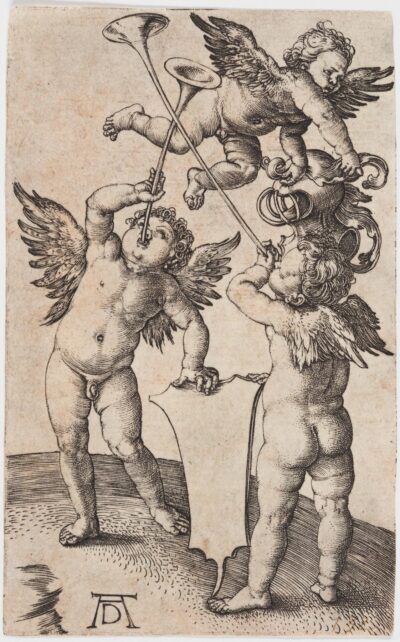Christ before Caiaphas
Albrecht Dürer
Christ before Caiaphas
engraving
1512
An original Albrecht Dürer engraving.
1512
Original engraving printed in black ink on laid paper.
Dated and signed with the artist’s monogram in the plate on a hanging tablet upper center.
A superb 16th century/lifetime Meder “b” (of “c”) impression. One of fifteen plates comprising the Engraved Passion.
Catalog: Bartsch 6; Dodgson 55; Panofsky 113; Meder 6.b; Strauss 58; Schoch/Mende/Scherbaum 48.
The Engraved Passion is composed of fifteen engravings. Five were engraved between 1507 and 1511 and the remaining ten in 1512. Unlike the woodcut books, the Passion engravings were not accompanied by text, but from Dürer’s Netherlands diary, we know that he customarily sold them as a set. Dürer’s engravings are more somber and restrained in their presentation of Christ’s passion than either the large or small woodcut versions. The fineness of the engraved lines enabled Dürer to suggest in these scenes an almost spiritual light. The same fineness also made possible a greater exploration of facial expression, thereby expanding psychological dimensions.
The Engraved Passion scenes have a compelling forthrightness and grandeur owing to the prominence of the participants who occupy most of the available space. The consistent placement of the figures in the foreground unifies the series.
In this engraving Christ’s answer to Caiaphas that he was the awaited Messiah and the Son of God constituted blasphemy in Jewish law and was punishable by death, a sentence which under the Romans the Sanhedrin was not empowered to carry out. The scene before Caiaphus depicts the moment when the High Priest tore his robes to bear his breast and exclaimed “Blasphemy!”
